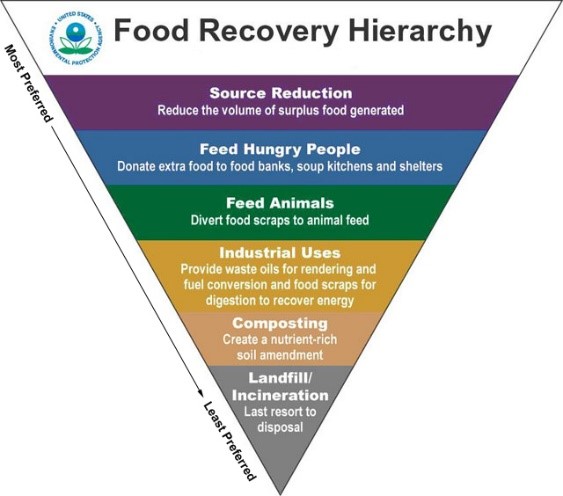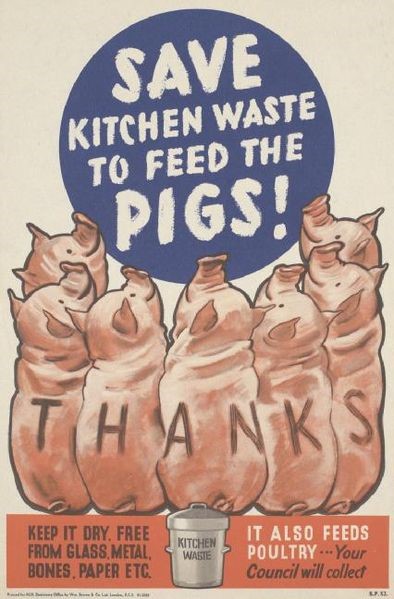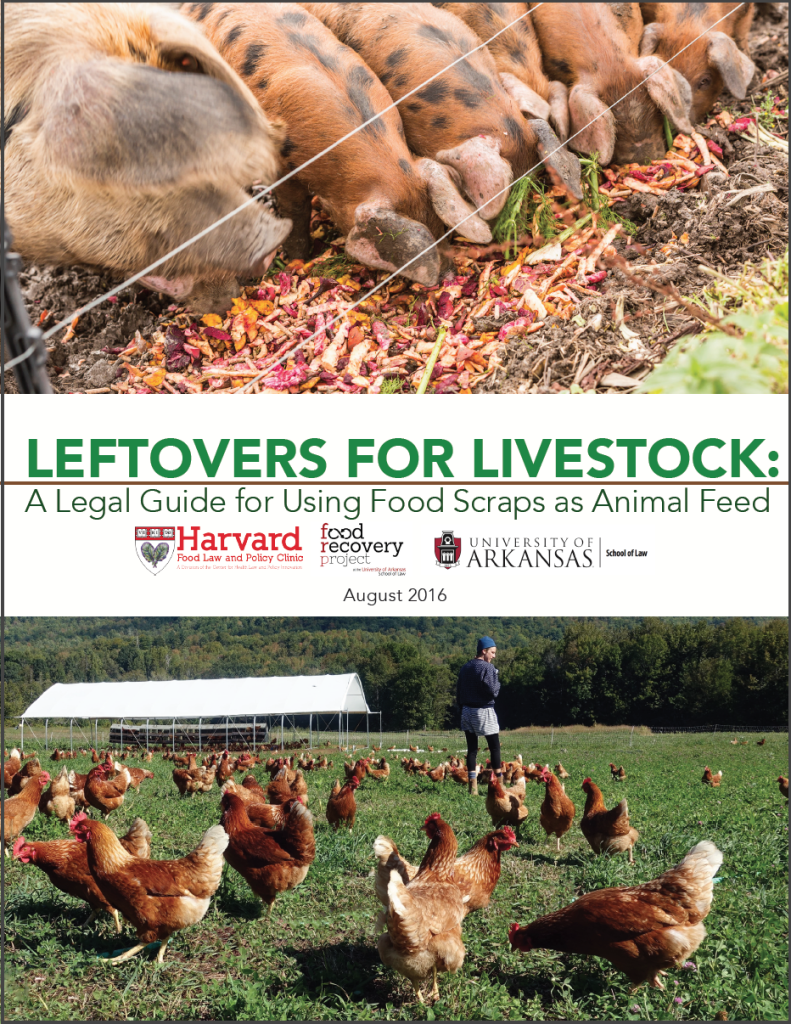The US EPA Food Recovery Hierarchy establishes priorities for the types of activities individuals and organizations can undertake to prevent and reduce food waste. The hierarchy is depicted as an inverted pyramid, showing the most desirable or effective activities at the top (the pyramid’s “base”), with least desirable activities at the bottom (the pyramid’s “tip”).

As with any consideration of waste reduction, source reduction, or preventing waste before it occurs through changes in processes is the most preferred category of activity in this hierarchy. Source reduction activities can include actions such as adjusting food preparation practices so less surplus food is generated, altering food buying habits to reduce spoilage of product before it can be used, or altering serving practices so that people are not provided more food than they are likely to eat. Source reduction of food waste is the most efficient means to ensure that the myriad resources invested in food production and distribution (water, land, energy, human labor, etc.) are not squandered. Next on the list of priorities is feeding hungry people–in other words, diverting any unused, edible food to food banks, shelters, soup kitchens or similar programs so it provides nutrition as intended, instead of occupying space in a landfill. If food cannot be diverted for human consumption (because it is deemed unfit for humans, because it exceeds the amount of food that can be feasibly managed by human food donation infrastructure, etc.), then the next most desirable option is to use food scraps as livestock feed, or food for animals in shelters, zoos, or as raw material for animal feed manufacturers. Many of us may have mental images of farmers in days gone by saving scraps for pig feed, or “slop.” During WWII, when so many materials were in short supply due to the war effort, this practice was even encouraged by governments, as evidenced by this historic UK poster:

_Kitchen_Waste_to_Feed_the_Pigs!_Art.IWMPST14743.jpg
In modern times, diverting food scraps to feed animals has continued to be used in some instances with great success, keeping materials out of landfill and reducing operating costs for businesses and institutions. The US EPA web site features success stories from New Jersey’s Rutgers University and MGM Resorts International, which diverts scraps from several properties in Las Vegas. However, many well-intentioned programs attempt to divert food scraps to animal feed without being aware of the patchwork of regulations and restrictions that exist throughout the country, sometimes inadvertently violating the laws of their state. Regulations vary widely, and are tied to modern efforts to control the spread of disease among livestock. Some states allow feeding of scraps to livestock after heat treatment to ensure destruction of disease vectors. Other states, including Illinois, have outright bans on feeding food scraps to livestock, particularly swine, even if the scraps are plant-based. The one exception to the Illinois restrictions is that farmers may use scraps from their own households to feed their own swine. While researching state law on this matter for ISTC’s Green Lunchroom Challenge, I was personally struck by the use of the word “garbage” which regulation defines as “All waste material derived in whole or in part from the meat of any animal (including fish and poultry) or other animal material, and other refuse of any character whatsoever that has been associated with any such material, resulting from the handling, preparation, cooking, or consumption of food, except that such term shall not include waste from ordinary household operations which is fed directly to swine on the same premises where such household is located. Garbage also includes putrescible vegetable waste. “Garbage” does not include the contents of the bovine digestive tract. § 5/48-7 (2015).” Not exactly the common citizen’s definition of the word.
Luckily, to help guide organizations and individuals that are focusing more of their efforts on food recovery, the University of Arkansas Food Recovery Project and the Harvard Food Law and Policy Clinic have just released a first of its kind guide cataloging the various different state regulations tied to feeding food scraps to animals. Leftovers for Livestock: A Legal Guide to Using Excess Food as Animal Feed, can assist in navigating the somewhat daunting array of such regulations, helping programs ensure compliance with both federal and state law. It’s a must-read for anyone interested in food recovery, and for those interested in sustainability-related policy, it can provide an interesting example of how complex seemingly simple solutions may become when regulations vary from one location to the next. The guide is available online in PDF format from the Center for Health Law & Policy Innovation at the Harvard Law School.


